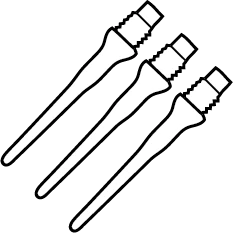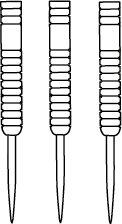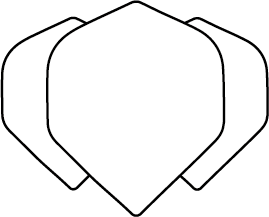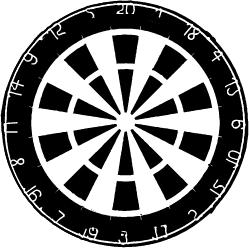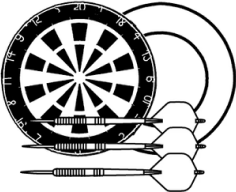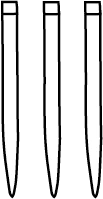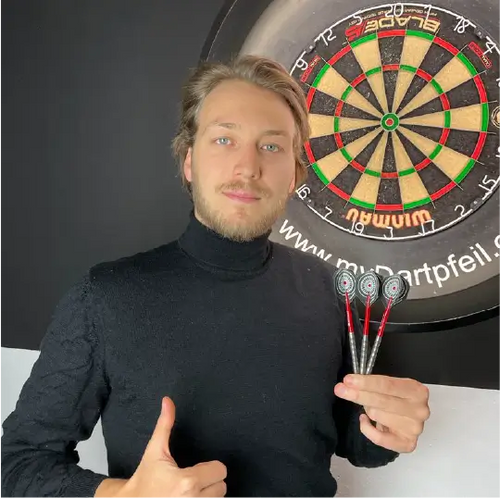The term dartitis is often greeted with a smile by many people. When it is explained that this is actually an illness, the smile often turns into an incredulous shaking of the head. But what exactly is dartitis and what is behind it? We spoke to those affected by the disease. They themselves describe dartitis as a condition in which the player is no longer able to release the arrow at the desired moment. There is usually a psychological problem, also known as a “head problem”, behind the illness.
What is dartitis?
According to many statements, dartitis progresses as a gradual process. At the beginning, most players had no problems playing darts and finding their rhythm in throwing. This is because there is no pressure situation in which the player gets the feeling that he absolutely has to hit a certain field. Many players only experience the first signs of dart disease in exceptional pressure situations. You have the feeling that you are no longer in control of your own hands and that you can no longer let go of the arrow at the usual moment.
Anyone who has experienced these moments has come into contact with dartitis. The problem and the danger of this disease, however, lies primarily in the fact that self-confidence is lost due to a few of these failures and the problem now occurs more and more frequently. This often leads to the arrow no longer landing in the board , but only in the surround . This failure is very difficult for the player to process because such a problem has not occurred before. As a result, the head problem now begins. The player thinks too much about his throwing style and subconsciously changes things in order to achieve success again - only in the rarest of cases with a positive result.

What are the causes of the disease?
The root cause is usually the risk of failure. In the one-on-one situation in front of the dartboard, the fear of losing surpasses everything else, including the enjoyment of possible success. In principle, dartitis can affect any player. The art is to trust in your own abilities even after a difficult phase. As soon as too much change is sought, the dartitis only spreads more significantly.
The most dangerous moment is when the player keeps thinking to himself: I used to be much better. Why doesn't this work anymore today? It is incredibly difficult to ignore this thought when the quality of the game actually drops noticeably - despite a higher training load. The player, in turn, looks for playful and technical solutions and forgets one thing above all: the mental solution. He should first free himself completely from his inner constraints. In other words, tinkering with your darts and your throwing technique will not solve dartitis. Tackling the causes must therefore begin in the mind.
How can dartitis be cured?
Dartitis is a condition in which the player is no longer able to release the dart at the desired moment.
Ultimately, dartitis is not a fine motor disorder of the fingers and hands, but rather a head problem that affects the hands. Dartitis can definitely be cured through regular mental training. In the first step, it is important to reduce your sporting ambition so as not to concentrate too much on winning.
Rather, it's about assessing your own performance - regardless of whether the game ended with a win or a loss. Furthermore, it makes sense not just to aim at the 20, but simply to throw at a target, regardless of the segment. In your head you should get rid of the fact that 20 is the highest segment. It's a field like any other on the board.
Unfortunately, very few players seek help with this problem. Rather, the actors are burying themselves in their own research into the causes, which will not lead to success until the issue has been dealt with in more detail. Hypnosis has also been used as a successful therapeutic tool. Hypnosis is intended to make the player free of thoughts and prejudices during his dart matches. At the end of the day, it's all about throwing at a target - only when this certain "looseness" is back can dartitis be combated.
Even professional players are not spared – Mensur Suljovic
Two prominent examples show that even well-known professional players are not spared from dartitis. Mensur Suljovic, currently one of the best players in the world, struggled with dartitis for a long time. His career was even on the verge of ending. Fortunately, Suljovic acted in time to relieve the cramp in his arm. First of all, he fine-tuned his throwing technique.
The Austrian has perfected the throw so much that releasing the arrows and the entire preparation of the throws is like a ritual. Always the same movements and processes. With this pattern, Suljovic no longer worries about what is right or wrong. He goes through his entire process again and again in a completely routine manner. At some point he reached the point where this usual pattern no longer required thinking. So the pressure decreased from time to time and Mensur Suljovic became the player we know today as the absolute top player in the PDC.
A very tragic story: Berry van Peer suffered on stage
Mensur Suljovic is not the only example of a darts professional suffering from dartitis. Berry van Peer also suffers from dart disease. Van Peer's current example shows how quickly dartitis can occur. All spectators of the Grand Slam of Darts in 2017 will still remember it very well. In the first group match against Simon Whitlock, van Peer took an unusually long time to execute his throws. Whitlock became more restless as the session went on and became visibly upset because he couldn't get into his usual rhythm. It was only after the game that Whitlock found out about the problems surrounding Berry van Peer.
The special and tragic thing happened a few days later: Berry van Peer met Gary Anderson in the second match in his group. In this game, all van Peer's dams finally broke. Berry van Peer fought the illness for minutes with watery eyes. The pressure and attention to himself were ultimately too much for the young actor. Everyone in the hall, but also the viewers on TV, could feel the tragedy and suffering of the Dutchman. It was definitely one of the most emotional moments in recent darts history. Anyone who has had the disease will give Van Peer the utmost respect for even taking to the stage a second time. Cheers!

Mental training as an aid
But it is now time to recognize dartitis as a disease. A number of amateur and professional players suffer from the disease again and again. Only if it is taken seriously can it be combated successfully. The topic of mental training in particular is more in focus in darts than ever before. Because quite a few players are convinced that darts is more of a mental matter than practical training.
Learn the best techniques and proven tips that will make you a darts champion. Click in now and start your journey to perfection on the dartboard!
- Here you can find out more about the perfect dart checkouts . Click here to get to know the checkout methods of dart professionals.





